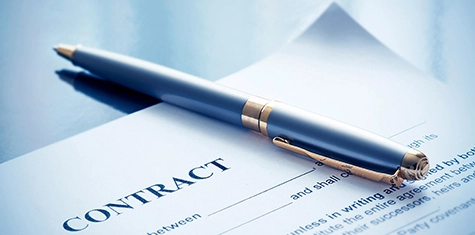
This article, which discusses due diligence items 6-10, is the second part of an overview of the 10 key factors to examine whether information is protectable and has value as a trade secret. Click here to read part one.
The purpose of the article is to move beyond mere definitions and provide a litigator’s perspective of the types of information that arbitrators and juries are likely to recognize and value as trade secrets, so you as a transactional lawyer can conduct more thorough due diligence.
6. Employment Agreements Establishing Ownership
In order to make sure that the seller owns, as opposed to the seller’s employees, the trade secret being acquired, the buyer needs to make sure that the seller’s employees have signed employment agreements that assign ownership of any of an employee’s work-related inventions to the employer. Moreover, the buyer will want to make sure that the agreements were in place when the trade secret was developed.
The fact that an agreement exists is not enough to insure seller ownership. Many states have specific statutory requirements for this type of invention-assignment agreement, and failure to meet the statutory requirements can invalidate the agreement. See Minn. Stat. § 181.78 (an example of the statutory requirements that are common in many states).
Finally, a buyer may want to consider having the seller obtain written acknowledgment of the seller’s ownership of the trade secret from the seller’s employees involved in the trade secret’s development.
7. Legal Recognition
Various jurisdictions have recognized different types of information (e.g., process for producing drug ingredient, swim lesson curriculum) as a potential trade secret. Conversely, jurisdictions have rejected trade-secret status for types of information (e.g., general business information, variations of a widely used process). Interestingly, whether a customer list is considered a trade secret varies widely by the state and by the list’s characteristics. It is of a paramount importance to have a clear understanding of how the jurisdiction whose law will control the status decision treats the information. Also, it is a factor to consider if you are including a choice-of-law provision in the purchase agreement.
8. Non-Compete, Non-Disclosures with Sellers
As a buyer, you want to have agreements with the seller that clearly define the seller’s post-closing non-compete and non-disclosure obligations. Any non-disclosure should tightly define the trade secrets purchase in order to avoid any misunderstandings, especially where multiple trade secrets are being purchased. I have been involved in cases where the seller touts the value of the trade secret pre-sale and then tries to claim that particular information was not a trade secret post-sale because the trade secret was not tightly defined in the sales documents.
9. Publicly Available Information
In evaluating whether information qualifies as a trade secret, one of the factors is whether the information is generally known. Information that is generally known does not qualify as a trade secret. As a general rule, however, the seller need not be the sole party with the information, but the information cannot be so widely known in an industry that its secrecy does not confer an economic or competitive advantage. Electro-Craft Corp. v. Controlled Motion, Inc., 332 N.W.2d 890, 900 (Minn. 1983).
Thus, a buyer should conduct due diligence into how widespread the knowledge of the putative trade secret is in the particular industry. Such due diligence is more difficult than patent due diligence because there are no governmental filings to facilitate the research. The two most likely sources of information are the public disclosures of competitors and the knowledge of an expert in the industry. A buyer, however, will need the seller’s permission and non-disclosure to get a meaningful expert analysis. The difficulty of due diligence in the trade-secret context justifies more robust representations and warranties from the seller regarding the information’s trade-secret status.
10. Reasonable Measures
In order for a trade secret to be protectable, the owner must have made reasonable efforts to protect the trade secret. Minn. Stat. § 325.01, subd. 5(ii); Electro-Craft Corp., 332 N.W.2d at 899-902. Absolute secrecy is not required; only partial or qualified secrecy has been required by the common law. Surgidev Corp. v. Eye Tech., Inc., 648 F. Supp. 661, 692-93 (D. Minn. 1980).
What constitutes reasonable measures could constitute an entire article – I provide my clients with a list of 18 measures to consider. One critical factor is whether the measures provide an employee with fair notice that the information is considered a trade secret. Electro-Craft Corp., 332 N.W.2d at 902. As a starting point, an owner should have anyone that will gain access to the information, whether an employee or a potential buyer, execute a non-disclosure. And, the owner should mark the information as a trade secret. If your due diligence reveals that an owner did not take these basic steps, you need to reconsider the deal.
If you are interested in receiving additional trade-secret materials, including the author’s well-received Trade Secret Toolkit, please contact him at jpost@fredlaw.com.


